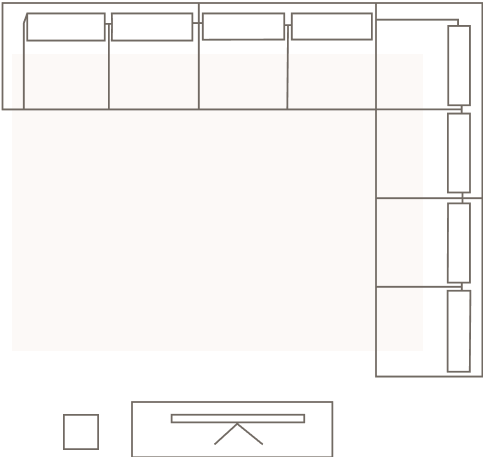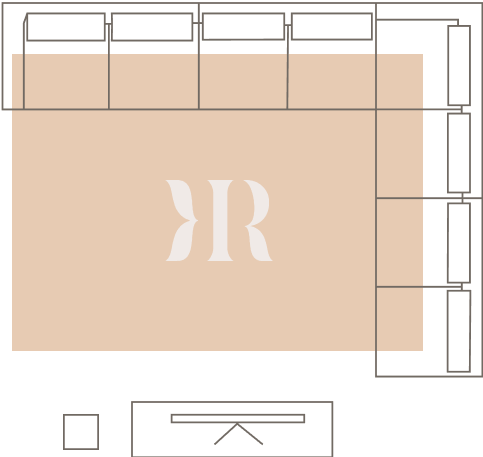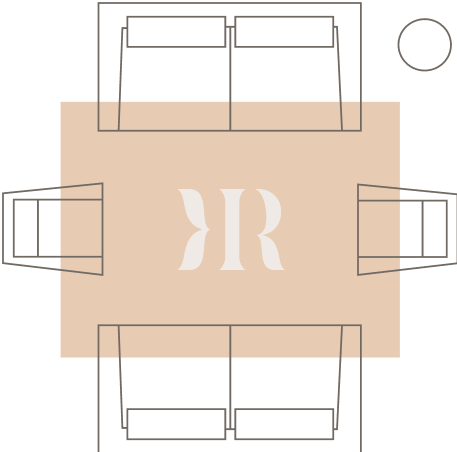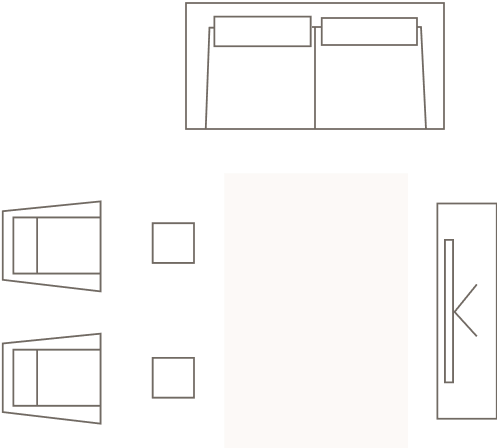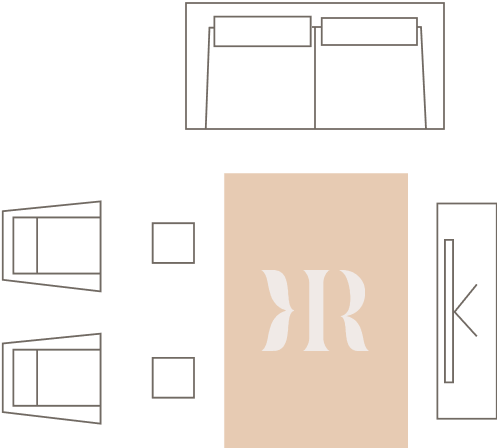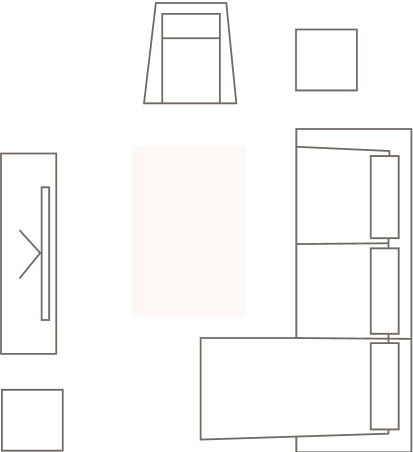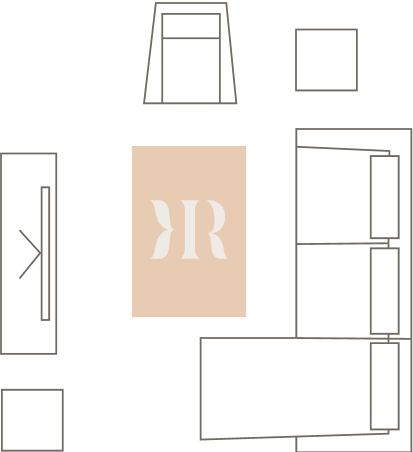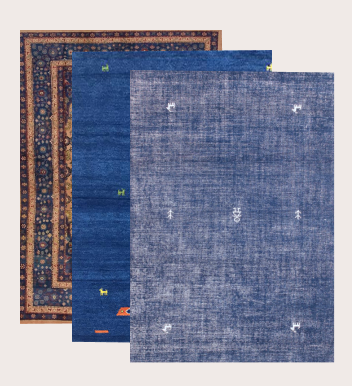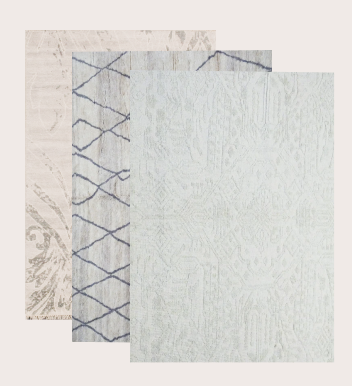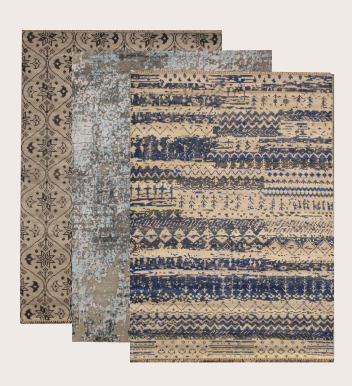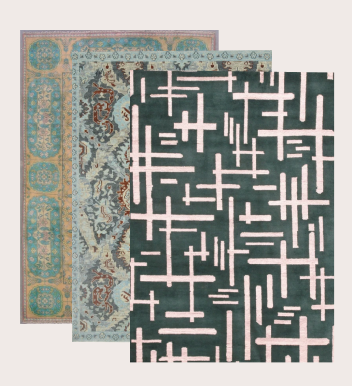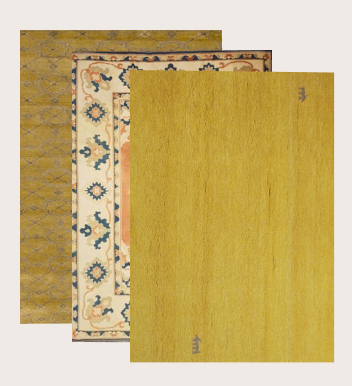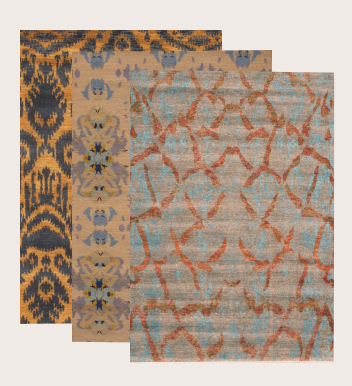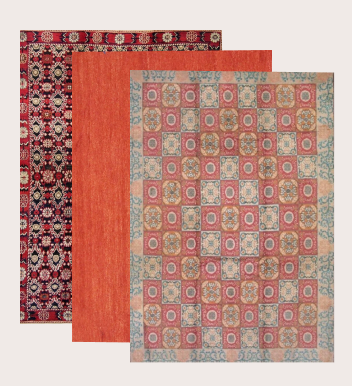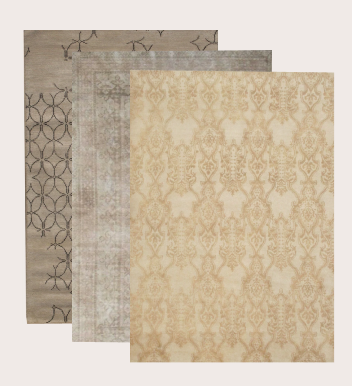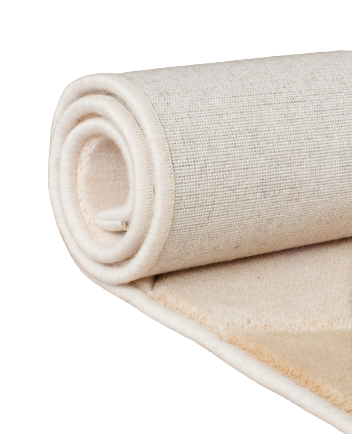How to Choose a Rug Size
Rugs, and in particular finding the right ones for your space, are a bit more complicated than many people realize. One of the biggest challenges is finding a rug that fits your space and doesn’t make your space feel too big or too small. We’re going to look at what it takes to properly size a rug for your room, and what to consider in the process. In the end, we’ll share a few tips on how to pick the right color once you’ve got the size figured out.
How To Choose A Rug Size
All Legs In
This is a popular style where all of the primary pieces of furniture in the rug’s area have all four legs on the rug, with a healthy margin around the exterior, and the rug is placed relative to adjacent walls. This layout has all of your conversational pieces on the rug, with at least 8” of open space between them and the edges of the rug. Then the rug is placed somewhere between 10” and 18” from the wall, to avoid a cramped, “almost wall-to-wall” feel.
Front Legs Only
This layout style is extremely popular, not only for the design and room-feel components but also because it generally requires a comparatively smaller rug, which makes it significantly cheaper.
All of your relevant furniture gets to be rug-adjacent, while still being its own piece. Each has the forward legs on the rug, with the rear legs on the bare floor. This layout is great for smaller spaces because not only do they need a smaller rug but it can make smaller spaces seem more spacious.
Combo Platter
So what do you do if you have a rug that is tragically undersized but has the perfect aesthetic? Get in what you can fit in. If the rug goes perfectly with the room but is too small for even the most cramped “front legs only” approach, find a place in the room where it will work. Maybe it’s under part of the table and part of the sofa. Find a place it’ll work and work it.
Find A Floater
A float is where one piece of furniture is the only one on a particular rug. To many people, this is a downright shocking method of interior design, while to others it’s just crazy enough to work. This is commonly done with more amorphous shapes of rugs, or rugs that are textured and supposed to be sculptural in their appearance. They tend to be best used with other unique pieces of furniture.
Choosing A Rug Color
If you’re wondering how to select a rug color, here are some things to consider that can make the process smoother:
- Use the color wheel, unless you’re an artist, remembering complementary and analogous colors can be a challenge, but a color wheel can simplify your palette.
- Neutrals are incredibly useful and can adapt to many different room styles with a minimal amount of effort.
- If you’re redesigning a room and can’t decide where to start, picking a rug and building the room around it can be a powerful technique.
- Think about the purpose of the room. Interior rooms with minimal traffic may be able to use lighter, brighter colors, while those in high-traffic areas like entryways or family rooms may benefit from darker colors to hide dirt or soiling.
Where To Find The Best Rugs For Your Spaces
No matter what style, color, or size rug you’re looking for, Kalili Rugs has a massive variety of hand-knotted area rugs. In addition to a wide inventory, all rugs benefit from free shipping, and you can sort by size so there’s no wasted time finding the perfect rug.


